The shift towards remote work has transformed the landscape of the graphic design industry, presenting both opportunities and challenges for creative agencies. While the flexibility and freedom of working from home (WFH) offer numerous benefits, they also come with their own set of drawbacks. Let’s delve into the pros and cons of WFH for design agencies.


Pros:
Flexibility and Work-Life Balance
One of the most significant advantages of WFH is the flexibility it provides. Designers can create their schedules, allowing for better work-life balance. This flexibility fosters greater creativity and productivity, as individuals can work during their peak hours and take breaks as needed. Moreover, eliminating the daily commute saves time and reduces stress, contributing to overall well-being.
Expanded Talent Pool
Remote work has enabled design agencies to tap into a global talent pool. With geographical barriers removed, agencies can recruit top talent from anywhere in the world, bringing diverse perspectives and skills to their teams. This
expanded talent pool enhances creativity and innovation, driving the agency’s competitive edge in the market.
Cost Savings
Operating remotely can lead to significant cost savings for design agencies. By eliminating expenses associated with maintaining physical office spaces, such as rent, utilities, and office supplies, agencies can allocate resources more efficiently. Additionally, remote work reduces overhead costs related to commuting and travel, benefiting both the agency and its employees.
Cons:
Collaboration and Communication Challenges
Design is inherently collaborative, requiring frequent communication and feedback among team members. Working remotely can pose challenges in maintaining seamless collaboration, especially for complex projects that require real-time interaction. Miscommunication and delays may occur, leading to project setbacks and decreased efficiency. Design agencies must invest in robust communication tools and establish clear workflows to mitigate these challenges.
Creative Isolation
The collaborative nature of design often thrives on spontaneous interactions and brainstorming sessions. Remote work can lead to feelings of isolation and disconnect among team members, hindering creativity and innovation. Without face-to-face interactions, designers may struggle to bounce ideas off each other and receive instant feedback, impacting the quality of their work. Design agencies must foster a sense of community and creativity through virtual meetings, collaborative platforms, and team-building activities.
Distractions and Work-Life Boundaries
While WFH offers flexibility, it can also blur the boundaries between work and personal life. Designers may find it challenging to disconnect from work, leading to burnout and decreased productivity. Distractions at home, such as household chores, family obligations, or noisy environments, can also impact focus and concentration. Design agencies should encourage employees to establish designated workspaces, set boundaries, and adhere to regular work hours to maintain a healthy work-life balance.
In conclusion, while WFH offers numerous benefits for design agencies, it also presents challenges that must be addressed effectively. By leveraging the flexibility and expanded talent pool of remote work while mitigating collaboration challenges and maintaining work-life boundaries, design agencies can thrive in the evolving remote landscape. Ultimately, finding the right balance between remote and in-person work is key to maximising the potential of both the agency and its employees.
If you’re looking for the right balance for your next project contact Fresco today!
